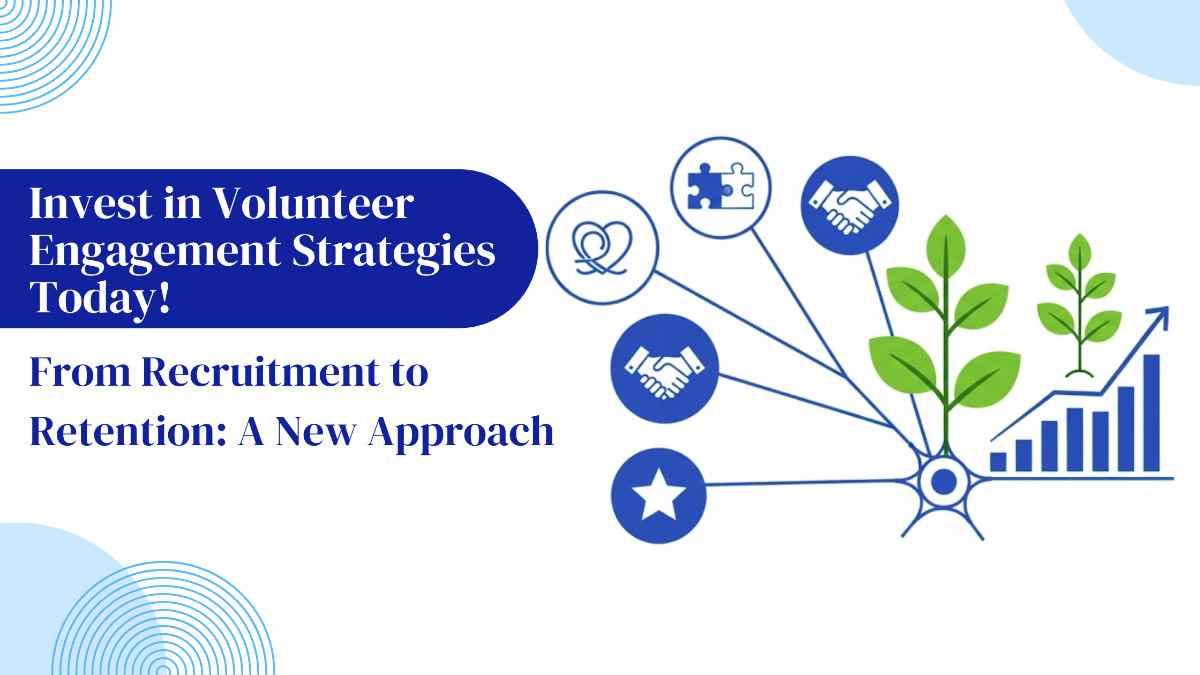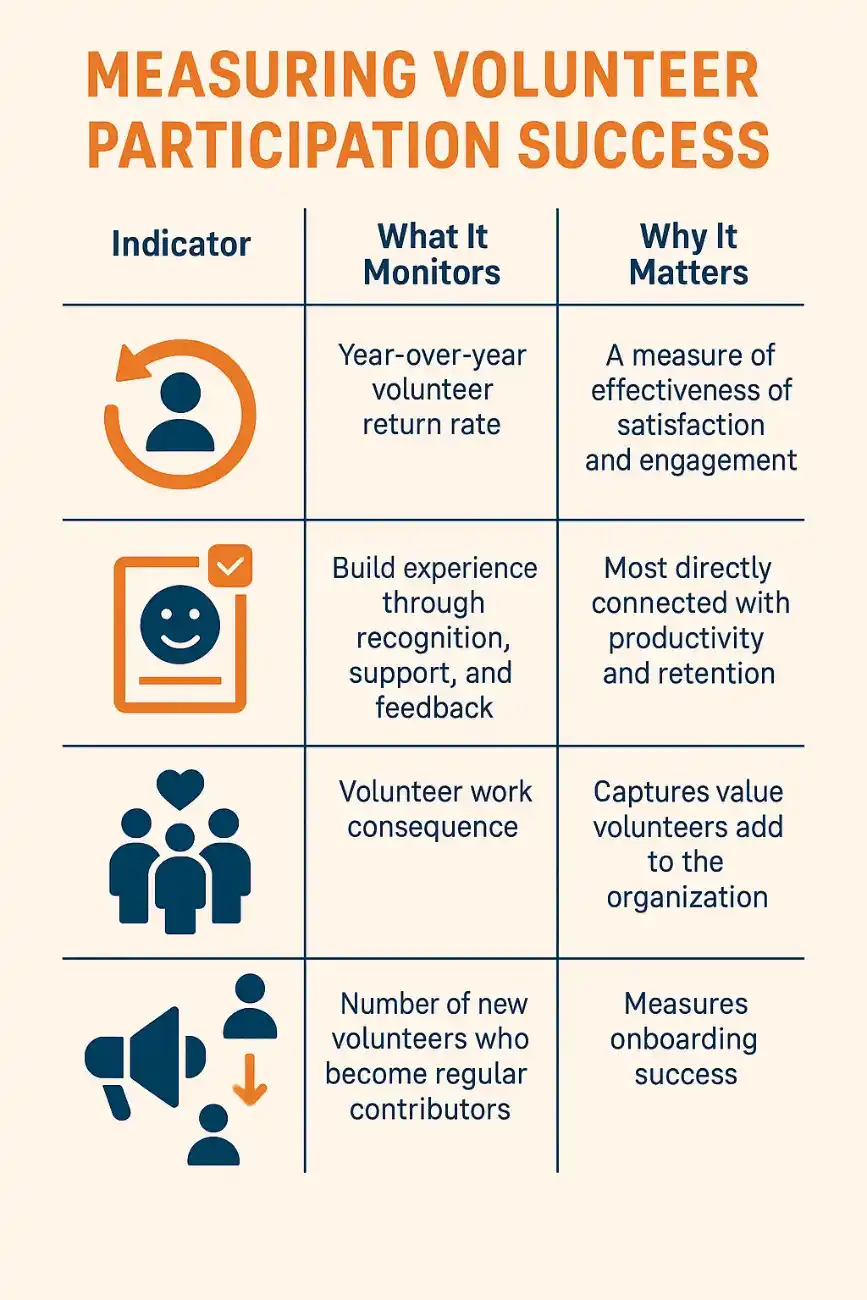Invest in Volunteer Engagement Strategies Today!

Volunteers are gold for nonprofits, providing not just time but an enormous economic advantage. Volunteers together contributed an estimated $123 billion value of work in 2023 in the U.S., showing a return on volunteer hour valued at about $33.49. Such a statistic proves the amazing potential of volunteerism to advance social agendas worldwide.
But even with this being such a huge contribution, the nonprofit sector is really strained. Volunteering in India only keeps 60% of volunteers for more than one year, so clearly there is a serious issue with better volunteer engagement here. This is also in line with the result of the India Philanthropy Initiative (IPI) Report, which shows a growing issue with volunteer retention as well.
India has witnessed an increase in volunteering, especially in education, health, and the environment, but more than simply recruiting volunteers, nonprofit organizations must invest in engaging and retaining them. Private philanthropy increased by 10% in FY 2023, according to a recent India Philanthropy Initiative (IPI) report, but that the nonprofit sector continues to have a retention issue.
It accomplishes this by having nonprofits focus more on enhancing the volunteer experience. This involves providing assignments that are compatible with the skills and personal interests of volunteers, thus maximizing satisfaction. More standard onboarding processes, continuous feedback cycles, and recognition and appreciation programs also have a critical role in building long-term relationships.
Through their data-based decision-making and utilising online means to quantify the engagement and satisfaction, nonprofits find it easier to retain volunteers. Volunteers have to be appreciated for their actions, and the institutions need to provide them with the environment where they are engaged long-term.
Knowing Volunteer Engagement
Volunteer engagement is many orders of magnitude greater than recruitment. It’s less about creating a culture that will drive the volunteers to work because they want to be part of it, belong, and be emotionally invested in the mission of the organization. Nonprofits, by investing in creating such a mission culture, can have a successful organization where volunteers are part of the organization’s success because their effort will be satisfying as well as long-lasting.
Major Determinants of Volunteer Involvement
Volunteer involvement is driven by several factors that influence long-term commitment and satisfaction. These determinants help nonprofits create an environment where volunteers feel connected to the mission, valued for their efforts, and motivated to continue their engagement. Below are the key factors that significantly impact volunteer retention and engagement:
Alignment to Mission
- Volunteers are more likely to have long-term commitment when they have an emotional investment in the cause.
- By establishing the organization’s mission and delineating the social good for which volunteers can make a difference through volunteerism on a broader scale, nonprofits can establish this emotional investment and foster long-term commitment.
Personalized Experiences
- Tailoring volunteer experiences to meet individual skill, motivators, and personal goals increases satisfaction.
- Research has shown that 72% of volunteers want to volunteer with a single organization, saying they want to have a fulfilling and unique volunteer experience to keep them engaged.
Recognition and Purpose
- Volunteers will stay longer if they are recognized.
- Tailored recognition—either in the form of awards, thank-you notes, or public recognition—increases emotional attachments and staying power.
Building a Volunteer Engagement Model
A strong volunteer engagement model goes beyond recruitment; it nurtures long-term relationships by focusing on strategic onboarding, ongoing support, and creating a sense of community. By aligning efforts with volunteers’ personal goals, providing consistent feedback, and offering growth opportunities, nonprofits can enhance their volunteer retention and impact. Below are the core components to building a robust engagement model:
Strategic Recruitment
- Target recruitment of like-minded, value-driven individuals who have a similar purpose.
- Emphasize opportunities for meaningful contribution through compelling volunteering and commit to volunteers who are inspired by something more than an assignment of a task. They want to do impactful work.
Personalized On boarding and Orientation
- Create intentional, structured onboarding that clearly communicates role and expectations.
- Align tasks with the professional expertise of volunteers to provide maximum satisfaction and long-term engagement.
Regular Contact and Support
- It doesn’t end with onboarding. Ongoing support through regular check-ins, feedback loops, and career development keeps volunteers active and creates a higher level of commitment.
- Having mentorship programs in place can even create leadership opportunities for volunteers, creating long-term commitment.
Effective Communication Channels
- Involve volunteers and keep them up to date with regular communications—newsletters, emails, or social media.
- Reporting volunteering and organizational success to volunteers encourages transparency and ownership.
Volunteer Community Building
- Schedule social activities, reward schemes, and team-building exercises to encourage bonding.
- This brings together the volunteer team, prevents burnout, and creates long-term commitment.
Feedback and Correction
- Regularly collect feedback using such tools as the Volunteer Satisfaction Index (VSI) to monitor core areas of support, empowerment, and membership in groups.
- Follow up on the feedback to constantly enhance engagement activity.
Measuring Volunteer Participation Success
Measurement of the most important indicators allows organizations to place a number or polish up their involvement work:

In 2023, 75.7 million Americans volunteered and donated 4.99 billion hours. Measuring retention, satisfaction, and program impact enables nonprofits to understand where they can improve their services and ensure they have a solid plan.
Conclusion: An Intentional Long-Term Investment in Volunteers
Volunteer engagement is an intentional, long-term investment. Nonprofits that make mission alignment, individualized recognition, community, and long-term commitment a priority will build long-term relationships with their volunteers. Not only does this drive satisfaction and retention, but also the overall organizational impact. With data-driven insights and a volunteer-focused culture, nonprofits can ensure volunteers are the passionate and dedicated heartbeat of their mission.
👉 Want to see how you can power this impact in your organization? explore how our platform supports strategic volunteer engagement.
Suggested Blogs
Let’s discuss the idea
Join hundreds of companies transforming their corporate communities with Almashines






